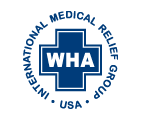|
Today i saw a 38 year old peasant woman who had an unexpected pregnancy. She was about 4 months pregnant and presented to the clinic with swelling of her legs and shortness of breath. She looked comfortable despite these symptoms.
I ordered and echocardiogram which showed critical narrowing of the mitral valve (mitral valve stenosis) and severe pulmonary hypertension with pulmonary pressure of 95 mmHg, a very serious condition that , if not treated, can kill both her and her baby 90% of the time.
Would it have been acceptable in our society to let this patient terminate her pregnancy? Of course it would, as in medicine especially in the field of obstetrics, the mother's life is considered "more important" than her baby's.
In Myanmar, a Buddhist country, however, that option might not be feasible. It is a conservative society where women are still sitting behind men in a temple and prohibited to go beyond the designated area.
Furthermore, the patient might not be able to pay for the surgical correction of her condition even if it can be done. The optimal procedure would have been a valve replacement although not possible during her pregnancy. She can have a "balloon" treatment as a temporary fix to her problem.
At of this time, I haven't gotten news that the patient will agree to this procedure given the high cost. After discussing further with the hospital’s only cardiologist, she suggested that patient to be referred to the Yangon General Hospital (5 hours away) and be enrolled in a clinical trial where the cost of the balloon procedure is reduced to ¼ of the normal cost or approximately $500. This is possible since the balloon (normally a single use device) is being sterilized and reused in up to 4 patients. This is absolutely not an option in the US but given her financial situation and the fact that she and her unborn child are facing near certain death without treatment, this option is both practical and life saving. We are working to find ways to help her with the cost of the procedure
-Dr. Thien Do, MD Cardiologist
---------
Our host medical team was well organized with the hospital facility and local staff prepared to assist us with our joint mission. The clinic was filled with patients, some already registered to see our general practitioners, pediatrician, sub specialist, ophthalmologist/retina specialist and dental team. Our providers teamed up with local physicians and nurses who translated and were active members of the treatment team. We enjoyed warm and lively exchanges amongst the patients and members of the treatment team. Patients that we saw had acute conditions for initial diagnosis and treatment as well as chronic conditions which we were able to assist in their long term management. We also made great efforts to emphasize nutritional aspects, lifestyle modifications and other preventitive measures to the patients. We raised awareness amongst our patients about the potential adverse health effects of chewing betel. A longstanding practice dating back to antiquity, A betel quid is a potent parcel of Areca nuts and lime wrapped in a betel leaf that gives users 'a lift.' Betel has been associated with oral and upper gastrointestinal tract malignancies as well as gastric ulcers and asthma exacerbations. The patients were receptive, inquisitive and very appreciative. It was wonderful to exchange our thoughts and ideas on the management of patients with the local physicians and staff. Dr.'s Nguyen and myself lectured to the local physicians and staff on common eye and gastrointestinal disorders.
It is through ongoing collaborative and educational measures that we hope to have the most impact on the medical community and delivery of care to the Myanmar people.
-Dr. Frank Procaccino, MD Gastroenterology
 Blog 8 Blog 8 |
DAY 10  |
|
